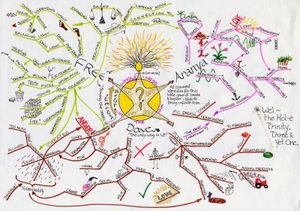Memorisation techniques
Contents
Introduction
In this learning module, you will explore a range of memorisation techniques
- Mneumonics
- Memorisation
- Mind maps
- Flashcards
Getting familiar with mnumonics & memorisation
- First read these articles
- Then ask a friend of yours to help you with your studies, and explain to them what the following memorisation techniques are, and how you might use them.
- Acronyms
- Acrostics
- Chunking
- Memorisation
- If you have trouble explaining any of the techniques or you find that you don't understand how they might be applied to your study, read through the articles again until you feel clearer then talk with your friend again.
Using Mind Maps
Mind maps are a visual way of representing information emphasising the relationships between key elements. To create a good mindmap you need to be able to clearly understand the relationships, and the created mind-map is generally fairly easy to recall.
- Run through RMIT's interactive tutorial to learn more about using mind maps in your studies.
Using Flash Cards
Flash cards are an excellent method of memorising the type of information that needs to be rote-learned. Good examples in massage therapy study are anatomical terminology and muscles origins & insertions. The following article - Flash cards – provides a good explanation of how to use flash cards effectively. Remember you can always pick up a set of cards from the Otago Polytechnic reception desk if you ask for them in association with the learning centre.
Resources
- California Polytechnic - Memorization
- Memory and related Learning Principles
- Improving Memory
- Mind Tools' - Memory Improvement Techniques
